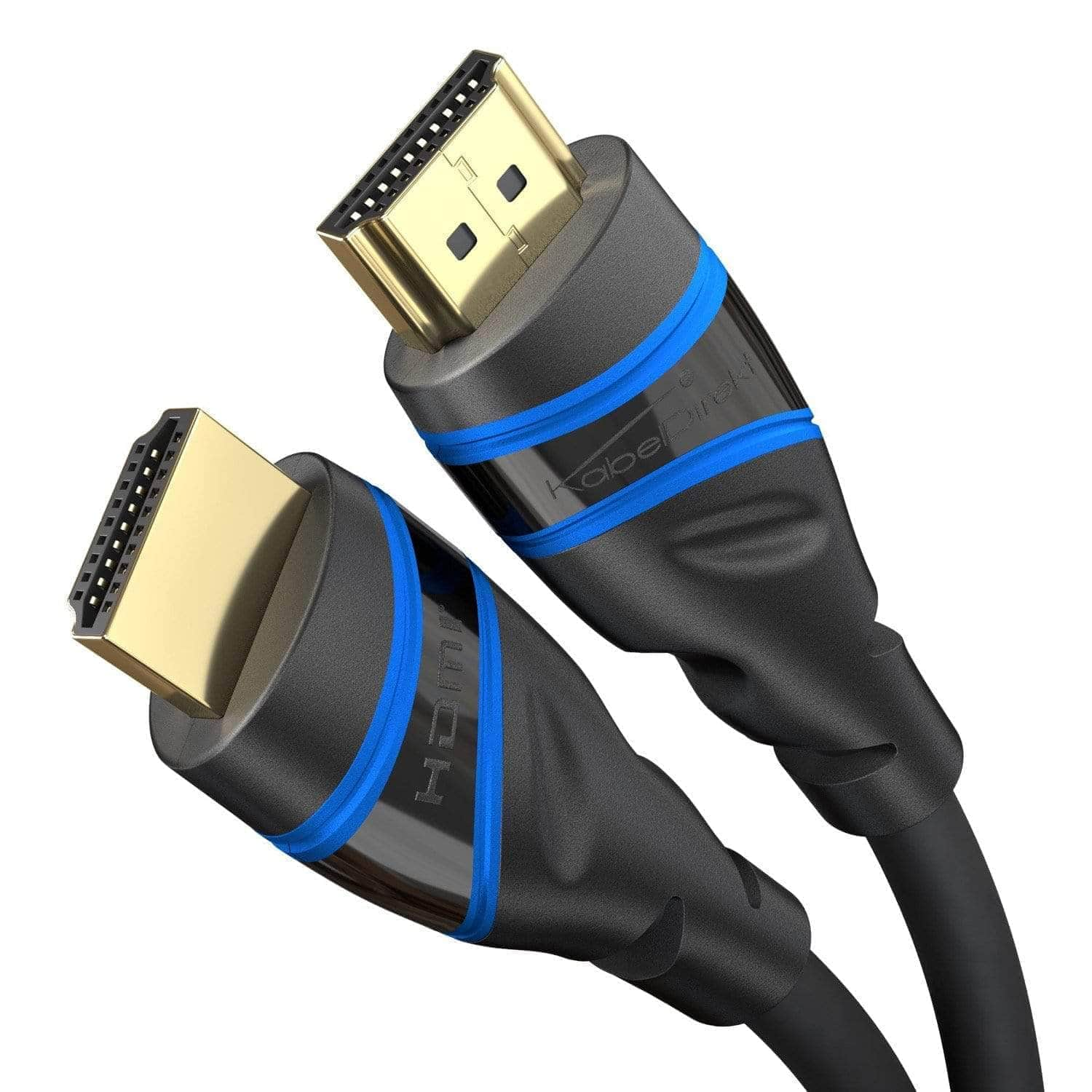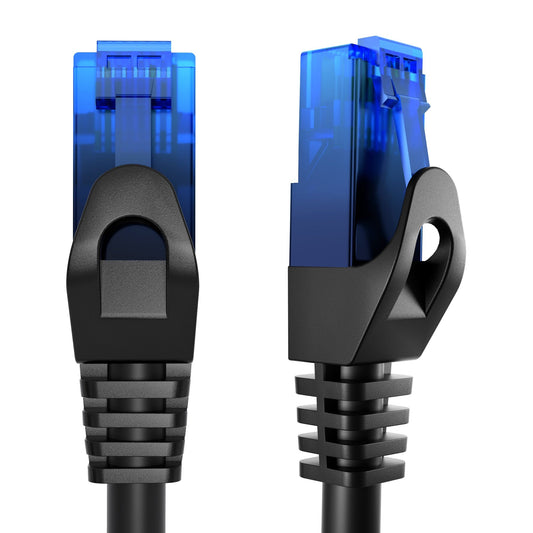-
{# Optional: Hier war bei dir ein zusätzlicher Titelblock; den habe ich entfernt, damit der Titel nur einmal erscheint. #}
-
{# Optional: Hier war bei dir ein zusätzlicher Titelblock; den habe ich entfernt, damit der Titel nur einmal erscheint. #}
Collection: CAT6 ethernet cables
CAT 6 network cables for LAN and internet
We’re totally dependent on the internet. Although almost all internet-enabled devices support Wi-Fi, using a cable to connect to the internet is simply more stable and still often the preferred way because of that. CAT 6 cables are one of several options for connecting your hardware to your network and accessing the World Wide Web – read on to learn more.
What are CAT 6 cables?
CAT 6 cables are what are known as twisted pair cables based on the Ethernet standard. You’ll probably also hear them called LAN or Ethernet cables. Looking at a cross-sectional view of a CAT 6 cable (or any other type of network cable), you can see why it got this name as the conductors are twisted together in pairs.
There are several network cable categories, from CAT 1 to CAT 8.1. The higher the number, the more capable the Ethernet cable. CAT 6 network cables achieve a maximum frequency of 250MHz, meaning they provide fast data transfer speeds of up to 1Gbit/s, making them the ideal choice for most homes. They have RJ45 connectors (also known as Western connectors), which are used widely, and a locking tab for a rock-solid connection between the cable and port.
CAT 6 cables for your home network
Our CAT 6 cables are suitable for all routers, modems, hubs, and switches with RJ45 ports. They’re a great choice to connect computers, video game consoles (such as a PlayStation and Xbox), TV receivers with a LAN connector, and TVs/smart TVs to your router and enjoy a stable internet connection. Our gigabit LAN cables are immune to interference thanks to their twisted pair design. They also feature a protective jacket which prevents kinks, and the connectors have a locking tab to keep the cable connected at all times.
In our online shop, we offer CAT 6 cables in various lengths that go from shorter cables just 0.25m long to longer cables of 10m, 20m, 25m, and even 30m. In addition to single cables, we also offer cables in packs of five and some in packs of ten.
We offer a choice between black CAT 6 cables with black/silver or black/blue connectors. These cables aren’t just different to look at – the black/silver cables are shielded by a conductive foil screen, but the twisted pairs do not have their own shielding (F/UTP). By contrast, the black/blue version has no shielding at all (UTP). This means they’re smaller in diameter, making them more flexible and easier to lay than STP cables which do have shielding.
FAQs about CAT 6 network cables
What’s the difference between CAT 6 and CAT 7?
CAT 7 cables reach a higher frequency than CAT 6 cables (600MHz versus 250MHz), so they’re designed for much higher bandwidths (up to 10Gbit/s).
Which is better: CAT 6 or CAT 7?
As CAT 7 cables are capable of handling higher bandwidths, they’re clearly more capable than CAT 6 cables.
What is UTP?
UTP stands for unshielded twisted pair. This is a type of network cable that has no shielding, meaning it’s more reasonably priced than a cable with shielding. These cables are also more flexible, although be aware that you will suffer a drop in performance with longer cables.
Which is the right LAN cable for me?
CAT 6 cables are more than enough for most homes. Only very few households have an internet connection faster than 1Gbit/s. If you have a slower internet connection, you’ll only really need CAT 7 cables if you want to or need to lay very long cables. In this case, more advanced Ethernet connectors will be worth your while as they’ll ensure you don’t drop below your internet connection’s maximum bandwidth.
What’s the difference between a patch cable and a network cable?
Patch cables are network cables that are equipped with connectors and are not fixed in place – unlike network cables.
What is the maximum length a LAN cable can cover?
In theory, LAN network cables can be up to 100 metres long. However, the longer the cable, the better the shielding needs to be so you don’t suffer a drop in performance. Head over to our shop where you’ll find RJ45 couplers and extension cables for any scenario.

HDMI Cables
We offer HDMI cables in all versions, lengths, and materials. Our products are engineered in Germany and manufactured worldwide in licensed facilities.



